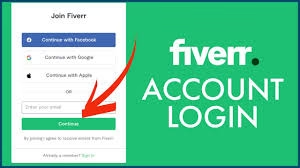Google Rank n the digital age, visibility is everything. Whether you’re running a blog, an online store, or a business website, your position on Google search results can make or break your online success. This positioning is referred to as Google Rank—a measure of how well your web page performs in Google’s search engine results pages (SERPs).
This article explores what Google Rank is, how it works, what factors influence it, and the best practices to improve your rankings organically and sustainably.
What Is Google Rank?
Google Rank refers to the position your web page occupies in the search engine results for a particular query. If you search “best running shoes” and your site appears third on the list, your page ranks #3 for that keyword.
The higher your page appears on Google, the more traffic it tends to get. Studies show that:
- The first result gets around 28-32% of all clicks.
- The second result gets around 15%.
- The third result gets about 10%, and it drops sharply after that.
Clearly, ranking high in Google is one of the most critical aspects of digital marketing and SEO.
How Does Google Ranking Work?
Google uses a complex algorithm to determine which pages to show for each search and in what order. This algorithm evaluates over 200 ranking factors. While not all are publicly known, SEO experts and Google itself have confirmed many of them.
1. Crawling and Indexing
Before a page can rank, Google needs to know it exists. This is done through:
- Crawling: Google’s bots (called Googlebot) explore the web and find new or updated content.
- Indexing: Once discovered, the content is stored in Google’s index (a giant database).
Only indexed pages are eligible to appear in the search results.
2. Ranking
When a user enters a query, Google sifts through its index to find the most relevant and useful pages. It then ranks them based on a variety of factors, such as relevance, authority, usability, and freshness.
Key Ranking Factors
Let’s break down the major elements that influence Google Rank.
1. Content Quality
“Content is king” is still true today. Google prioritizes pages that provide helpful, relevant, and original content.
- E-E-A-T: Google emphasizes Experience, Expertise, Authoritativeness, and Trustworthiness.
- Keyword Usage: Using relevant keywords naturally helps Google understand your content.
- Content Length: Longer content tends to rank better, as it covers topics more comprehensively.
- Multimedia: Images, videos, and infographics improve engagement and ranking.
2. Backlinks
Links from other websites pointing to your page (backlinks) are among the top ranking factors.
- Quality over quantity: A single link from a reputable site is better than 100 from spammy ones.
- Relevance: Links from sites in your niche carry more weight.
- Anchor Text: The words used in the link affect ranking for specific keywords.
3. On-Page SEO
These are optimizations you make directly on your web page:
- Title Tags: Include your primary keyword and make it click-worthy.
- Meta Descriptions: Though not a ranking factor, they affect click-through rate (CTR).
- Headings (H1, H2, H3): Organize content and include keywords.
- Image Optimization: Use alt tags and compress files for speed.
- URL Structure: Keep URLs short, descriptive, and include keywords.
4. Mobile-Friendliness
With most traffic coming from mobile devices, Google uses mobile-first indexing, meaning it ranks based on the mobile version of your site.
Make sure your site is:
- Responsive
- Easy to navigate on small screens
- Free from intrusive pop-ups
5. Page Speed
Page load time affects both user experience and rankings.
- Use tools like Google PageSpeed Insights.
- Optimize images, use caching, and reduce server response time.
6. User Experience (UX)
Google rewards sites that users find helpful and easy to use.
Metrics include:
- Bounce Rate: How many people leave after seeing one page.
- Time on Site: Longer time indicates valuable content.
- Pages per Session: More pages indicate deeper engagement.
7. Domain Authority
Although not an official Google metric, domain authority (DA) indicates how trustworthy your site is, based on backlinks and overall presence.
8. Freshness
Some queries prefer fresh content. Regularly updating your site can help maintain or improve rankings.
How to Check Your Google Rank
There are multiple tools available to track your keyword rankings:
- Google Search Console: Free tool from Google showing impressions, clicks, and average position.
- SEMrush / Ahrefs / Moz: Premium tools that provide detailed ranking reports.
- Rank Math / Yoast SEO: WordPress plugins that assist with on-page SEO and tracking.
Regular monitoring helps you identify which strategies work and where you need to improve.
Best SEO Strategies to Improve Google Rank
Improving your Google Rank takes time, effort, and consistent SEO practices. Here are proven strategies:
1. Keyword Research
Find out what your target audience is searching for:
- Use tools like Google Keyword Planner, Ubersuggest, or Ahrefs.
- Target a mix of short-tail (broad) and long-tail (specific) keywords.
- Focus on search intent: Informational, navigational, commercial, or transactional.
2. Create High-Quality Content
Every piece of content should:
- Solve a real problem.
- Be more in-depth than competitors.
- Be easy to read (short paragraphs, bullet points, visuals).
- Include internal and external links.
3. Optimize Existing Content
Don’t just focus on new content. Improve existing pages:
- Add new information or stats.
- Update old images.
- Improve meta tags and headlines.
- Remove broken links.
4. Build High-Quality Backlinks
- Guest post on reputable blogs.
- Reach out to journalists (HARO).
- Create linkable assets like ultimate guides or original research.
- Avoid black-hat tactics like buying spammy links.
5. Improve Site Speed and UX
- Use a fast hosting provider.
- Minimize scripts and plugins.
- Compress images and use lazy loading.
- Design a user-friendly layout.
6. Leverage Internal Linking
Internal links help distribute authority across your site and keep users engaged.
- Link from high-performing pages to those you want to boost.
- Use descriptive anchor text.
7. Target Featured Snippets
Aim to appear in Google’s “position zero” by:
- Using question-based headings (e.g., “What is Google Rank?”).
- Providing concise answers.
- Structuring content with lists, tables, or definitions.
8. Use Schema Markup
Schema helps search engines better understand your content. You can use it for:
- Reviews
- Events
- Products
- FAQs
This can increase CTR through rich results.
Common Google Rank Pitfalls to Avoid
1. Keyword Stuffing
Overusing keywords can lead to penalties and decreased readability.
2. Duplicate Content
Ensure all content is unique. Use tools like Copyscape to check for plagiarism.
3. Thin Content
Pages with very little content often don’t rank well. Aim for at least 500-1000 words per page where relevant.
4. Poor Mobile Experience
Sites that aren’t mobile-friendly may be demoted in search results.
5. Ignoring Technical SEO
Broken links, unoptimized sitemaps, and crawl errors can hurt your rankings.
The Role of AI and Machine Learning in Google Ranking
Google’s algorithm has evolved from keyword matching to understanding search intent. AI and machine learning play a crucial role:
1. RankBrain
Part of Google’s core algorithm, RankBrain uses machine learning to better understand queries and deliver relevant results.
2. BERT
Bidirectional Encoder Representations from Transformers (BERT) helps Google understand the context of words in a sentence.
3. Helpful Content Update
Google now prioritizes content “written by people, for people.” Thin, AI-generated content that lacks value is being filtered out.
The Future of Google Ranking
As technology advances, we can expect:
- Voice search optimization to become more important.
- Search Generative Experience (SGE) to change how people interact with search.
- Zero-click searches (where users get answers without clicking) to increase.
- Greater emphasis on user behavior, not just keywords.
To stay competitive, it’s essential to focus on user satisfaction, technical health, and high-quality content.
Conclusion
Google Rank is more than just a number—it’s a reflection of your website’s authority, relevance, and user experience. Climbing the search results is no easy feat, but by understanding how the algorithm works and applying proven SEO strategies, you can significantly boost your visibility.
Remember, SEO is a long-term investment. The sooner you start optimizing your content, the sooner you’ll enjoy the rewards of higher rankings, increased traffic, and greater online success.
Would you like this formatted as a downloadable article (PDF or DOCX)? Or do you want it optimized for web publishing (with headers, meta descriptions, etc.)?







Thanks for sharing. I read many of your blog posts, cool, your blog is very good.